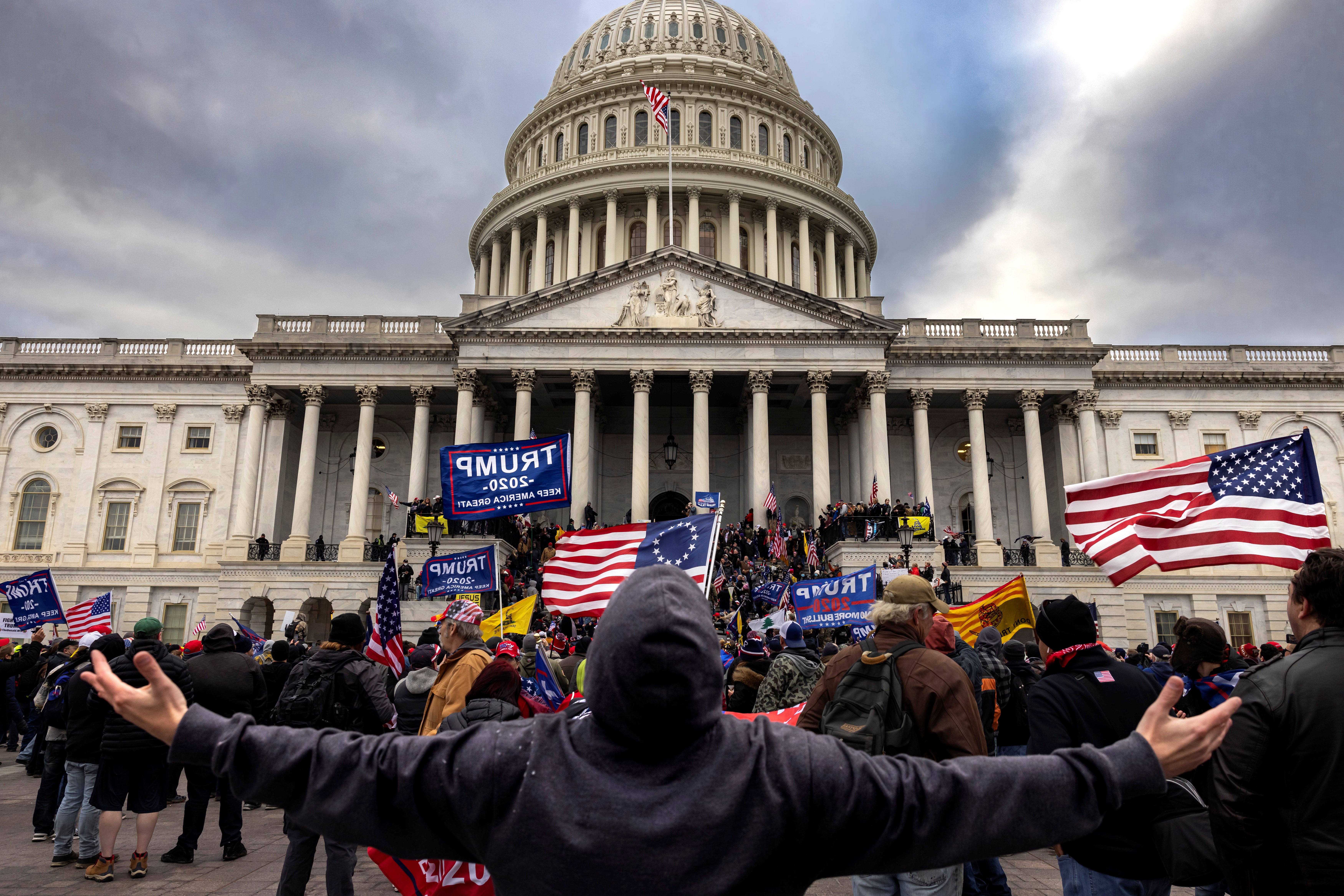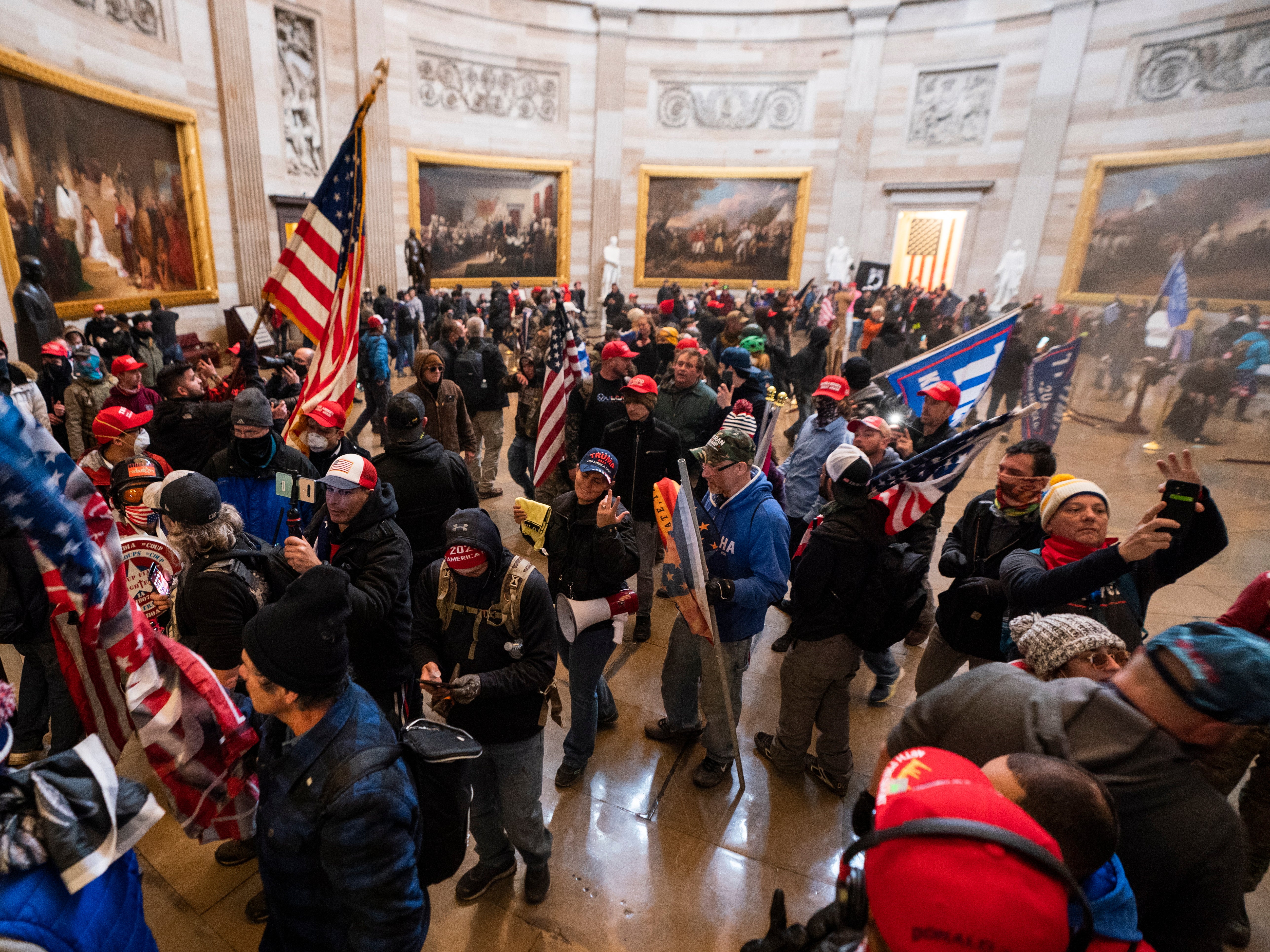Experts studied al-Qaeda and Isis for years, now they are turning their attention to extremists closer to home
‘Our preoccupation with the Islamist and jihadist threat may have blinded us to the fact terrorism can start at home,’ says one, as Richard Hall reports

Your support helps us to tell the story
From reproductive rights to climate change to Big Tech, The Independent is on the ground when the story is developing. Whether it's investigating the financials of Elon Musk's pro-Trump PAC or producing our latest documentary, 'The A Word', which shines a light on the American women fighting for reproductive rights, we know how important it is to parse out the facts from the messaging.
At such a critical moment in US history, we need reporters on the ground. Your donation allows us to keep sending journalists to speak to both sides of the story.
The Independent is trusted by Americans across the entire political spectrum. And unlike many other quality news outlets, we choose not to lock Americans out of our reporting and analysis with paywalls. We believe quality journalism should be available to everyone, paid for by those who can afford it.
Your support makes all the difference.In the years after the 11 September terror attacks, national security strategy in the US came to be dominated by an almost singular focus on Islamist extremism. Efforts to counter the threat of jihadist violence created a cottage industry of experts and researchers whose attention was similarly focused in one direction.
But throughout those same years, far right terror killed more Americans than any other ideology and yet there was no great shift in resources and attention to match – until now.
A rise in domestic extremism under Donald Trump, which culminated with the attack on the US Capitol on 6 January, is finally bringing about that shift. Many researchers and experts who for years have chased Isis and al-Qaeda across the globe are now turning their attention closer to home.
Martha Crenshaw, one of the foremost terror experts in the United States, wrote this week that the problem revealed by the Capitol attack “was not an inability to respond, but failure to anticipate the threat”.
“Our preoccupation since the 11 September attacks with the Islamist and jihadist threat may have blinded us to the fact that terrorism can start at home, with familiar ideologies,” she wrote in the New York Times.
In July last year, Professor Crenshaw extended her research to include more far-right violent extremists, and she is not the only one. But why didn’t this shift take place sooner?
Read more: I saw Trump’s fascism at the heart of American democracy
Since 9/11, jihadists have killed 107 people inside the US, according to the New America think tank. The death toll from far-right terrorism “consisting of anti-government, militia, white supremacist and anti-abortion violence”, was 114 people.
“I think the national security apparatus is like an aircraft carrier, slow to turn,” Professor Crenshaw, who has studied terrorism for 40 years, told The Independent. “Once aimed at Islamist extremism, it is hard to adjust to a new, shifting, threat.”
The field of terrorism studies, she adds, “has always been event-driven to a large extent. More violence, more study of it”.
That is why many believe the Capitol attack could act as a galvanising event that will bring about that shift in focus, both in the study of the extremist threat and in efforts to counter it. The scale of the event, and the impact it has had on the public at large, cannot be understated. The shift in focus has the potential to shape government policy on civil liberties, national security and diplomacy in the coming years.
Colin P Clarke, a terror expert at the Soufan Group think tank, is another academic putting greater focus on domestic extremists in the US. He began studying terrorism as an undergraduate at Galway University in Ireland, with a focus on the IRA. His first day in class was 11 September 2001, an event that set him on a career path focused on Islamist extremism. His turning point came with the 2017 “Unite the Right” rally of white supremacists in Charlottesville, Virginia.

“I was like ‘woah, there’s something going on here,’” Dr Clarke says of the rally, which culminated in the killing of 32-year-old Heather Heyer by one of the rally attendants after he drove his car into a crowd of counter-protesters.
“I had this caricature in my mind of what a white supremacist was: someone who was southern, rural, uneducated, kinda like your father’s generation’s Ku Klux Klan. The images from Charlottesville were not like that. It looked like a pretty broad cross-section of America. As we started peeling back the layers, we realised there weren’t your classic KKK types.”
That coming-out party for extremist groups in Charlottesville might have been a catalyst for stronger action. Instead, then President Trump refused to condemn the extremists, instead referring to “fine people on both sides”.
Joe Biden cited Mr Trump’s reaction to those events as his primary motivation for entering the presidential race, which he eventually won. The Biden administration has an altogether different approach to the threat of right-wing political violence, Dr Clarke says.
“I think the Biden admin has a sense of urgency that we haven’t seen under four years of Trump. He wasn’t even a neutral party. He dog-whistled and pumped them up,” he says. “We’re seeing this urgency with personnel in government, federal law-enforcement, counterterrorism analysts and those in the think-tank world.”
One question now is whether the industry of terrorism analysts and extremism can adapt to face this new threat. The years of focus on one kind of extremism has left many playing catch-up.
“For the last 20 years, the so-called global war on terror, we built this global architecture to deal specifically with Salafi jihadis – we didn’t treat all kinds of terrorism equally,” says Clarke.
“Now we’re looking at white supremacist extremism, a lot of people I talk to understand the sense of urgency, but they don’t know quite where to begin. We’re at a very early stage. We’re having definitional debates that we didn’t really have with jihadists.”
Another key question about this shift will be whether the approach to tackle domestic extremism in the US can avoid repeating the mistakes of the war on terror. That effort, launched by president George W Bush in 2001 in response to the 11 September attacks, caused countless deaths across the Middle East as the US military used a scorched-earth strategy to rout out terror groups and those who supported them. It cost in excess of $1 trillion, according to some estimates, and the very groups that it aimed to weaken emerged stronger than ever before from the instability that followed. Groups such as Isis and Al Qaeda capitalised on the chaos and the resentment fuelled by the US war efforts in Iraq and Afghanistan.
At home, meanwhile, civil liberties of ordinary civilians were curtailed and the rights of terror suspects suspended through the use of extrajudicial punishment and detainment. Muslim citizens particularly were targeted by law enforcement and intelligence services, which were given unprecedented powers of surveillance and monitoring by elected officials.
Seamus Hughes, an expert on terrorism and homegrown extremism at George Washington University, has long had his feet in both worlds. For most of the past decade, he has focused on the paths of Americans who joined Isis and Al Qaeda, but like other extremism researchers, his work recently has been focused more on far-right groups and figures.
While there have been calls in some quarters for a strategy in the same spirit as the war on terror to tackle domestic extremists, Mr Hughes doesn’t see the fit.
“I don’t see using the war on terror tools in an American context. When you talk about homegrown extremism, it’s largely been a law-enforcement approach – that’s investigations, undercover agents, and arrests,” he says.
“There were a lot of colleagues at the FBI who have been quietly working these cases, who had previously sounded the alarm about the Proud Boys and Boogaloo, but it’s hard when you don’t have political cover and resources to do so,” he adds, suggesting that those resources may be forthcoming.
But there are also some transferable skills that researchers will bring to the fight against domestic terror. Pathways to extremism are similar across ideologies.
“There’s the tired phrases, but they also tend to be true. They share a sense of belonging, of wanting to be part of something larger than themselves. Conspiracy theories tend to be a running theme. They tend to be male,” says Mr Hughes.
“There are also pitfalls in trying to match up the two. You have to be careful to take lessons on a chessboard and take it to a checkers board. That said, there are a number in our field who have experienced looking at all forms of extremism. There are unifying themes throughout and a proper analyst can look at all of them and add value,” he adds.
Dr Clarke, who published a book in 2019 on the fall of the Isis caliphate, says the methodology of researching extremists remains much unchanged.
“For a political scientist, you fall back on a methodological tool kit. That helps you get down to basics,” he says. “We quickly found there were a lot of commonalities between white supremacists and jihadis in terms of how they use propaganda and how they recruit.”
The underlying theme behind this shift in expertise and attention is that most of these experts predict the threat of domestic extremism will increase. Trump’s presidency and the Capitol attack have had a galvanising effect for these groups. There is already evidence that the attack is fuelling recruitment for militias and other anti-government groups.
“It feels like the far right has serious momentum, and has been energised and emboldened by the last four years – the Capitol attacks being the seminal moment,” says Dr Clarke.
“Some people look at that as the logical endpoint for the Trump movement; I disagree, I see it as a starting point for a difficult few years.”



Join our commenting forum
Join thought-provoking conversations, follow other Independent readers and see their replies
Comments